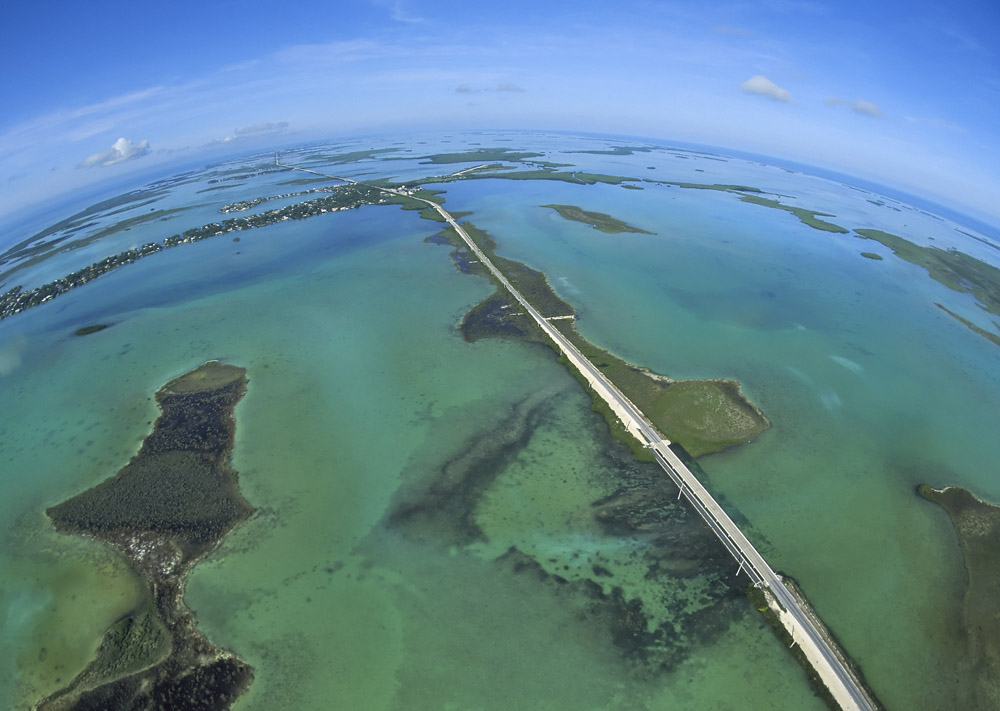For more than 100 years, the Florida Keys’ fascinating environment has been recognized and protected by forward-thinking conservation efforts. If you care about the Keys, you too can connect with this natural world by learning about five vital preserves that protect endangered plants, animals and marine life — as well as the continental United States’ only living coral barrier reef.
 ONE: Florida Keys National Marine Sanctuary. Administered by the National Oceanic and Atmospheric Administration, the sanctuary was established in 1990 and is jointly managed with the state of Florida. It protects 2,900 square nautical miles of waters and submerged lands — and it’s regarded as a national treasure.
ONE: Florida Keys National Marine Sanctuary. Administered by the National Oceanic and Atmospheric Administration, the sanctuary was established in 1990 and is jointly managed with the state of Florida. It protects 2,900 square nautical miles of waters and submerged lands — and it’s regarded as a national treasure.
The sanctuary surrounds the entire Florida Keys island chain and the world-renowned coral reef that parallels it. Within this area lie spectacular and nationally significant marine resources, historic shipwrecks and other archaeological wonders, extensive seagrass beds, mangrove-fringed islands, and a remarkable 6,000-plus species of marine life.
TWO: Key West National Wildlife Refuge. Vital though it is, the sanctuary isn’t the Keys’ oldest environmental preserve.
That honor goes to the Key West National Wildlife Refuge. Lying west of Key West and accessible only by boat, the refuge was designated in 1908 by President Theodore Roosevelt to create a safe haven and breeding ground for migratory species.

An indigenous Florida Keys great white heron stands on the shoreline in Islamorada. (Photo by Andy Newman, Florida Keys News Bureau)
The refuge covers over 2,000 acres of land and more than 200,000 acres of co-managed state waters. Today it provides nesting, roosting and foraging habitat for more than 250 species of birds — including roseate terns, ospreys, white-crowned pigeons and frigate birds — and a nesting ground for endangered sea turtles.
THREE: Great White Heron National Wildlife Refuge. In 1938, the Great White Heron National Wildlife Refuge was established to provide safe nesting and breeding areas for North America’s largest wading bird, as well as migratory birds and other wildlife.
Stretching between Key West and Marathon, the refuge features almost 200,000 acres of open water and islands in the Gulf of Mexico — an area often referred to as the backcountry. Primary access is by kayak, canoe or shallow-draft motorboat, and the pristine region is well worth a visit.
FOUR: National Key Deer Refuge. This Lower Keys haven is probably the best known of the Florida Keys’ wildlife preserves. It was created in 1957 to protect plant and wildlife species — most notably the appealing and endangered Key deer.
The miniature Key deer, about the size of a large dog, were once almost extinct. Today the population of shy, engaging animals is nearing 800, which makes their protection a heartwarming environmental success story. They graze especially in the early morning hours and at dusk — and spotting one isn’t always easy, but it’s a real treat when you do.

A Key deer eyes her surroundings on Big Pine Key. About the size of a large dog, the deer are indigenous to the lower Florida Keys. (Photo by Andy Newman, Florida Keys News Bureau)
The National Key Deer Refuge also shelters species including the Lower Keys marsh rabbit, Bartram’s hairstreak butterfly, American alligator and migratory and resident birds. The refuge encompasses more than 9,200 acres ranging from Bahia Honda Key to the eastern shores of Sugarloaf Key, out to the edge of the Gulf of Mexico. You’ll find a visitor center and nature trails on Big Pine Key.
FIVE: Crocodile Lake National Wildlife Refuge. Established in 1980 in upper Key Largo, this preserve includes habitat and nesting sites favored by the American crocodile and a habitat restoration program for the endangered Key Largo wood rat. The remote 6,700-acre refuge is generally closed to protect its inhabitants, but its native butterfly garden is open to the public. You can also participate in organized volunteer activities and guided walks.
FYI, a new Florida Keys National Wildlife Refuges Nature Center is expected to open soon near mile marker 30.5 on Big Pine Key. This 1,840-square-foot center will showcase all four Keys refuges — making it a great place to learn about Key deer and other plants and animals found only in the island chain.
And whether you’re a birder, diver or snorkeler, artist, kayaker, photographer, nature lover or overall outdoor enthusiast, discovering the marine sanctuary and wildlife refuges will provide an unmatched view of the Keys’ environmental wonders. So on your next visit, get out there and start exploring!

